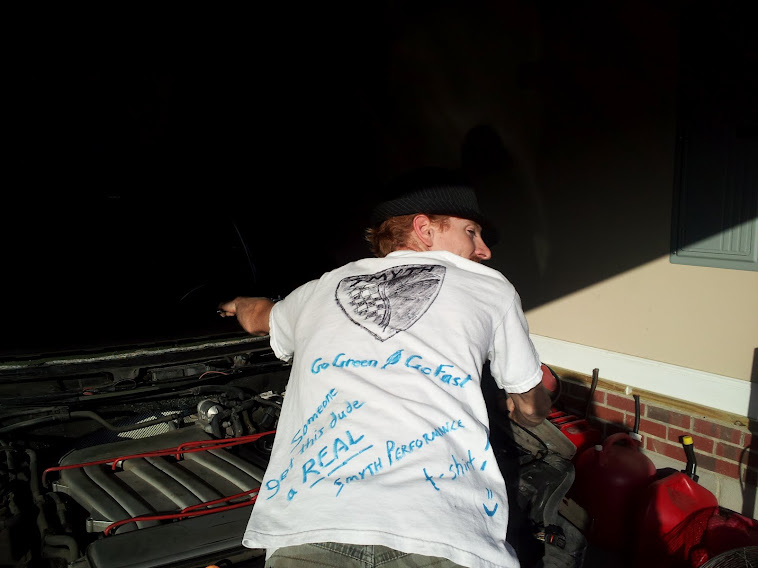Another short evening, but I'm itching to get back to work on this baby. I got a box of parts in from Smyth Performance recently which included some miscellaneous hardware that I had been missing and also
the shifter kit! This will allow me to do gobs more on the project. I was at a halt on a few areas like the wiring harness extension, fuel-cell and battery box assembly, and "plumbing." I didn't want to run all the front-to-rear hoses and wire without having the shifter kit installed as I would then just have to remove it to give myself working space there in the channel.
Anyway, tonight I laid out all my parts to get ready to tackle the shifter kit assembly this weekend. That's the big goal, but I'd really like to finish up the last bit of wiring harness extension also. If time is on my side, and I get really zealous, I'll assemble the front hardware for the fuel cell and battery box, do the cut at the base of the windshield frame (dash trough front area), and install the windshield frame. But let's not set the bar too high just yet. It's been a really long time since I've had the opportunity to put my nose to the grindstone here.
Tonight's work, other than layout and re-familiarization was limited to getting the tie rods removed from my extra power steering assembly, and installing them on the rear subframe. I finally got Evernote installed and synchronized yesterday. Now I can see the latest and greatest notes on everything that's been shared with me so far on the build manual. Mark recommends buying the tie rod parts on ebay, and it's actually not a bad deal. He said $130 or so, but I saw them for $95 w/FREE shipping. I almost bought them anyway, but I have an extra front end or two from my collection of Jetta parts I've been acquiring lately, so I couldn't put some good tie rods to waste. From the pictures, I finally figured out (don't know why I was dense to it before) how to remove the tie rods from the power steering piston rod. Having had a difficult time removing these, let me suggest that if you're also not buying new ones,
break the tie rods free before removing the power steering assembly from the K-frame. Having it bolted onto something or in a vise is the way to go with this. It was pretty simple to do as far as complexity, but it was difficult in a few time-eating ways. I don't know if you're reading this, Smyth Performance, but I'm going to make a small beta-suggestion on the subframe. Where the tie rod bolts to the powder-coated frame, the hole was almost perfectly sized, but a tad tight. I had to run a tap through it to get the tie rod stud to pass through. Maybe on some future frames, have it reamed out a couple thousandths (or laser cut a smidge bigger). Not a big deal, just some feedback that may help someone out later on.
I decided to call it quits early so I could blog and get to bed. It feels good to get back to work out there. This last weekend I had wanted to get some things done on the G3F, but over the winter, my garage shrank, and spring cleaning was obviously necessary. Now I have tons of room to work. Fabulous!





